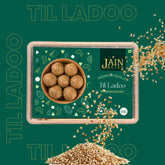Jainism vs Buddhism – More Different Than You Think!
 India has always been a land of deep spiritual roots and philosophical evolution. Among the many traditions that emerged in ancient times, Buddhism and Jainism hold a unique place. Both religions originated around the same time and region, yet differ significantly in their beliefs, practices, and historical evolution.
India has always been a land of deep spiritual roots and philosophical evolution. Among the many traditions that emerged in ancient times, Buddhism and Jainism hold a unique place. Both religions originated around the same time and region, yet differ significantly in their beliefs, practices, and historical evolution.
Origin & Historical Foundation
Jainism:
-
Jainism is believed to be much older than Buddhism, with roots tracing back to pre-Vedic times.
-
The religion was revived by Lord Mahavira (599–527 BCE), the 24th Tirthankara.
-
However, Jains believe that the teachings of Jainism have existed since time immemorial, and Mahavira was just a reformer, not a founder.
Buddhism:
-
Founded by Siddhartha Gautama (563–483 BCE), known as the Buddha.
-
Born in Lumbini (present-day Nepal), he attained enlightenment under the Bodhi tree in Bodh Gaya.
-
Buddhism emerged as a reform movement against ritualistic Vedic religion and social inequalities.
Core Philosophy & Beliefs
When it comes to their core beliefs, Jainism and Buddhism take distinct philosophical routes, despite originating in the same cultural environment.
Jainism strongly believes in the existence of an eternal soul, known as Jiva.Every living being possesses this soul, and the ultimate goal is to liberate it from the cycle of birth and death through strict discipline and non-violence. Liberation (Moksha) in Jainism is achieved through intense self-control, ascetic practices, and ethical living.
In contrast, Buddhism follows the doctrine of Anatta, which means denial of a permanent soul or self. According to Buddha, clinging to the idea of a fixed soul leads to suffering. The ultimate aim in Buddhism is to attain Nirvana, which is freedom from suffering and the cycle of rebirth, achieved through the practice of the Eightfold Path.
Both religions reject the concept of a creator God. Regarding karma, Jainism adopts a much stricter stance. Every thought, word, and action binds karma directly to the soul, affecting its purity and progress. On the other hand, Buddhism sees karma more as a cause-and-effect principle, where one's actions influence future experiences. Meditation and mindful living are seen as tools to break free from this karmic cycle.
Practices & Path to Liberation
Jainism:
-
Five Vows: Ahimsa (non-violence), Satya, Asteya, Brahmacharya, Aparigraha.
-
Strict ascetic lifestyle.
-
Emphasis on self-mortification and penance.
-
Vegetarianism is compulsory.
Buddhism:
-
Eightfold Path: Right View, Intention, Speech, Action, Livelihood, Effort, Mindfulness, Concentration.
-
Middle path – neither indulgence nor extreme asceticism.
-
Meditation and mindfulness play a key role.
-
Vegetarianism is optional.
Historical Spread & Impact
Jainism:
-
Remained mostly concentrated in India.
-
Patronized by kings like Chandragupta Maurya (who became a Jain monk).
-
Built great temples like Palitana, Shravanabelagola, Ranakpur.
Buddhism:
-
Spread across Asia – Sri Lanka, China, Japan, Thailand, Tibet.
-
Patronized by Emperor Ashoka, who played a major role in globalizing Buddhism.
-
Built Stupas, Viharas, and sent missionaries abroad
Living the Philosophy
Food Habits
Jainism:
-
Extremely strict vegetarianism—even more rigorous than usual vegetarian diets.
-
No root vegetables like onions, garlic, potatoes, carrots—because uprooting the plant kills the whole organism and disturbs microorganisms in the soil.
-
Avoidance of fermented foods (yeast, alcohol, etc.).
-
Many Jains follow Satvik food, eaten before sunset.
-
Practice of Fasting (Upvas) and Sallekhana (voluntary fasting to death) in advanced spiritual practice.
Buddhism:
-
Theravada Buddhists (especially monks) traditionally accept alms food, even if it includes meat, as long as the animal wasn't killed specifically for them.
-
Mahayana and Vajrayana Buddhists often prefer vegetarianism, but it's not universally compulsory.
-
Emphasis is on mindful eating and moderation.
-
Fasting is practiced occasionally, mostly on Uposatha days.
Travel, Possessions & Wealth
Jainism:
-
Monks and nuns do not stay permanently at one place, they travel barefoot (except during rainy season - Chaturmas).
-
Renounce all possessions; even a bowl or broom is seen as a necessity, not luxury.
-
Lay followers are encouraged to earn ethically and donate generously for religious and social causes.
Buddhism:
-
Monks and nuns may also lead a wandering lifestyle, but some live in monasteries permanently.
-
Few possessions—alms bowl, robes, needle, belt, water strainer.
-
Emphasis on detachment from material wealth and using resources for community welfare.

































